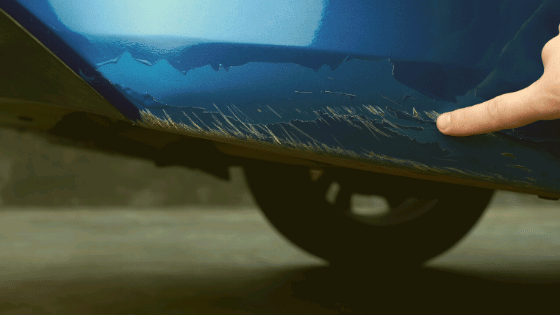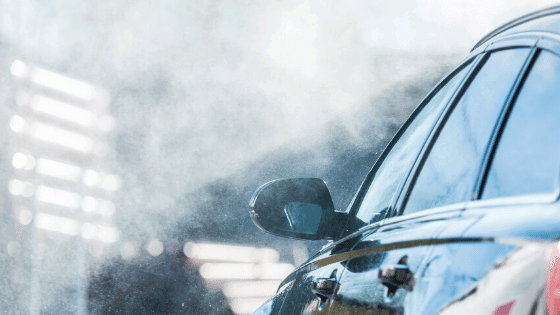- Our Mission: To provide the highest level of service and quality collision repair in an honest, ethical, and efficient manner. | Contact Us:
- 626-457-9114
- [email protected]

What Happens When You Get Into a Car Accident Without Insurance, But It’s Not Your Fault?
October 26, 2019
If the Airbags Deployed, Does that Mean My Car is Totaled?
December 22, 2019The initial shock of an accident causes your mind to go blank. It’s not until after a few minutes that you can begin to process what just happened. If you or someone else was injured, your first response might be to call for help. If it’s a situation where everyone walks out injury-free, you might proceed to check your damage and exchange information. Eventually, the question will arise: who is at fault?
Even with car insurance to protect you, no one ever wants to be at fault for an accident. But, accidents happen because humans are prone to error. The majority of the time, they are a direct consequence of driver misjudgment.
Other times it can be the fault of a single driver or more than one. It is not uncommon to have situations where drivers point the finger at each other, and for no one to admit fault. This could mean that the responsible driver will see premium increases for their insurance. Nevertheless, despite any driver’s efforts to deny fault, the location of the damage is reliable information that can help us determine who is at fault in a car accident and who will ultimately be responsible for paying the costs.
What Location of the Damage can Tell Us About an Accident
Just like police investigators will look at the physical evidence in a crime scene to help locate a suspect, vehicle damage is evidence that can help identify the driver who was at fault.
Car damages are vital pieces of information insurance companies can use to determine liability. Once it’s clear, the company representing the at-fault driver can begin the process of paying for any injuries and property damage.
Examples of Car Accident Damage by Location
- Passenger side damage strongly indicates a side impact where the other driver was at fault. This could mean a situation where the other car runs a red light and hits a vehicle that was proceeding through an intersection.
- Front-end damage usually occurs out of a driver’s own negligence. Cars with this type of damage are the result of rear-end collisions and other situations where the driver was not careful. There will always be exceptions, but front-end damage is a reliable indicator that the driver of this car made a critical error.
- Likewise, rear-end damage can mean the driver of this car was the innocent party. If one car has front end damage and the other has rear damage, we can determine that the driver of the vehicle with damage to the front was at fault because they crashed into the back of the other vehicle.
- Left-turn accidents are more complicated. But in the majority of cases, vehicles making the turn are usually responsible. The car making the turn may have complete front end damage, whereas the other may have damage on one side of the vehicle.
Not all accidents happen in a straight-forward way where it’s easy to figure out who caused the collision. There are always nuances that can complicate the facts. There is a reason why accident investigations can take weeks, sometimes months, to complete. Also, it’s not just drivers that can point the finger at each other, insurance companies can even disagree with the conclusions of their investigations.
Sometimes, it requires the skills of an accident reconstruction expert who can piece together evidence and re-create the events of an accident. Insurance companies will employ damage assessors and other experts that can examine the evidence in detail.
Additional Evidence In a Car Accident
Vehicle damage has to be taken into account along with other types of evidence, which may include:
- Speed
- Weather Conditions
- Driver Intoxication
- Road Conditions
- Police Reports
- Other potential hazards, such as construction zones, animals, missing stop signs
- Skid marks
There may also be individual factors such as a mechanical malfunction on a car:
- Faulty Steering
- Headlights
- Tires
- Braking Systems
If you were In an Accident, Document Your Damage
It is imperative that you preserve all pieces of evidence in an accident. Don’t ever try to fix or adjust car damage on your own.
For example, don’t try to put your bumper back together or do anything else that could alter the original damage. Leave everything the way it is so that investigators can adequately assess the evidence. Take photos with your cell phone from different angles and make notes.
Request a copy of an estimate from your body shop. They will usually provide this as a complementary part of their auto body services. Estimates are highly valuable pieces of evidence that show detailed documentation of a car’s damages. They may help insurance companies, attorneys, police officers, juries, and anyone else that is part of the process. Preserving the evidence and having detailed documentation can go a long way if you have a pending personal injury case and can help prove who was at fault.
Have Questions or Wish to Schedule an Appointment?
Call Us:(626) 457-9114
or Send Us a Message


